Solar eclipse of March 17, 1923
An annular solar eclipse occurred on March 17, 1923. A solar eclipse occurs when the Moon passes between Earth and the Sun, thereby totally or partly obscuring the image of the Sun for a viewer on Earth. An annular solar eclipse occurs when the Moon's apparent diameter is smaller than the Sun's, blocking most of the Sun's light and causing the Sun to look like an annulus (ring). An annular eclipse appears as a partial eclipse over a region of the Earth thousands of kilometres wide. Annularity was visible from Chile, Argentina, Falkland Islands including capital Stanley, Gough Island in Tristan da Cunha, South West Africa (today's Namibia), Bechuanaland Protectorate (today's Botswana, Southern Rhodesia (today's Zimbabwe) including capital Salisbury, Portuguese Mozambique (today's Mozambique), Nyasaland (today's Malawi), French Madagascar (the part now belonging to Madagascar, and the Islands of Juan de Nova and Tromelin).
| Solar eclipse of March 17, 1923 | |
|---|---|
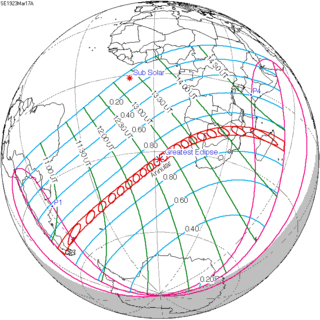 Map | |
| Type of eclipse | |
| Nature | Annular |
| Gamma | -0.5438 |
| Magnitude | 0.931 |
| Maximum eclipse | |
| Duration | 471 sec (7 m 51 s) |
| Coordinates | 33°S 2.4°E |
| Max. width of band | 305 km (190 mi) |
| Times (UTC) | |
| Greatest eclipse | 12:44:58 |
| References | |
| Saros | 138 (26 of 70) |
| Catalog # (SE5000) | 9334 |
Related eclipses
Solar eclipses 1921–1924
This eclipse is a member of a semester series. An eclipse in a semester series of solar eclipses repeats approximately every 177 days and 4 hours (a semester) at alternating nodes of the Moon's orbit.[1]
| Solar eclipse series sets from 1921–1924 | ||||
|---|---|---|---|---|
| Descending node | Ascending node | |||
| 118 | April 8, 1921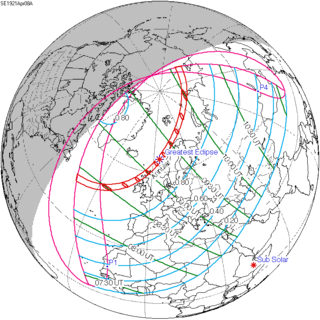 Annular |
123 | October 1, 1921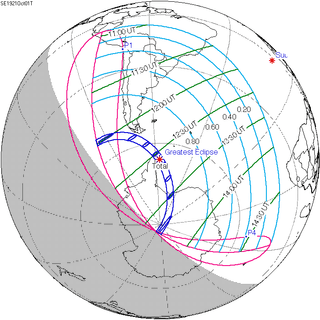 Total | |
| 128 | March 28, 1922 Annular |
133 | September 21, 1922 Total | |
| 138 | March 17, 1923 Annular |
143 | September 10, 1923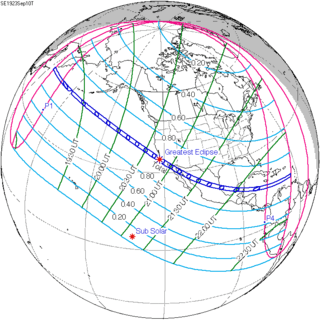 Total | |
| 148 | March 5, 1924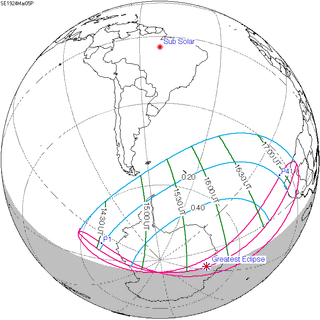 Partial |
153 | August 30, 1924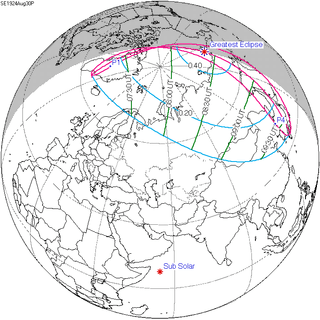 Partial | |
Saros 138
It is a part of Saros cycle 138, repeating every 18 years, 11 days, containing 70 events. The series started with partial solar eclipse on June 6, 1472. It contains annular eclipses from August 31, 1598 through February 18, 2482 with a hybrid eclipse on March 1, 2500. It has total eclipses from March 12, 2518 through April 3, 2554. The series ends at member 70 as a partial eclipse on July 11, 2716. The longest duration of totality will be only 56 seconds on April 3, 2554.
| Series members 25–35 occur between 1901 and 2100: | ||
|---|---|---|
| 25 | 26 | 27 |
 March 6, 1905 |
 March 17, 1923 |
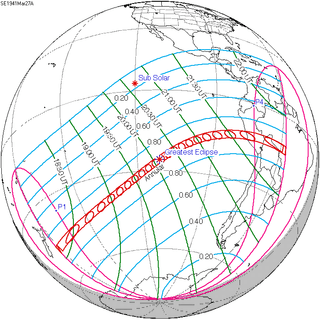 March 27, 1941 |
| 28 | 29 | 30 |
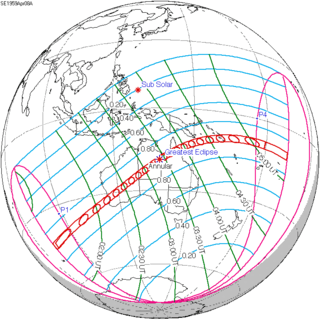 April 8, 1959 |
 April 18, 1977 |
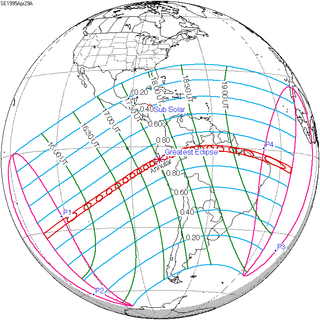 April 29, 1995 |
| 31 | 32 | 33 |
 May 10, 2013 |
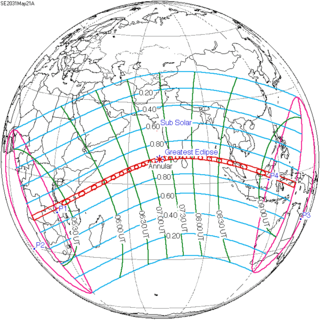 May 21, 2031 |
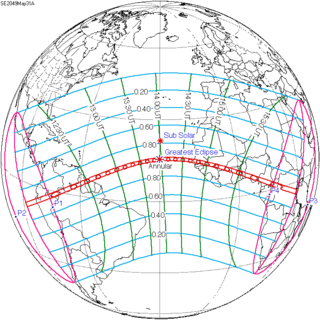 May 31, 2049 |
| 34 | 35 | |
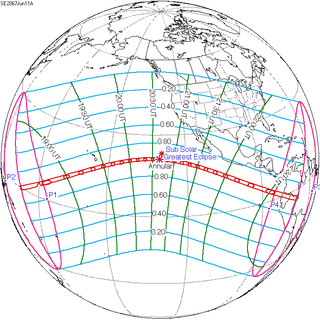 June 11, 2067 |
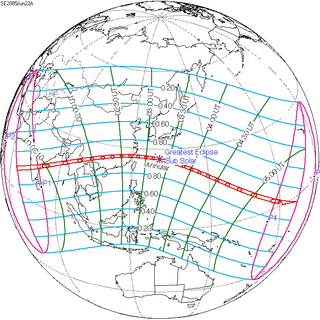 June 22, 2085 | |
Notes
- van Gent, R.H. "Solar- and Lunar-Eclipse Predictions from Antiquity to the Present". A Catalogue of Eclipse Cycles. Utrecht University. Retrieved 6 October 2018.
References
- Earth visibility chart and eclipse statistics Eclipse Predictions by Fred Espenak, NASA/GSFC
.jpg)
